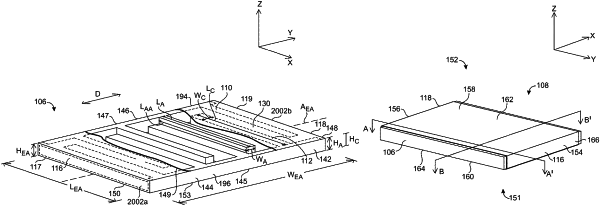| CPC H01M 10/058 (2013.01) [H01M 10/049 (2013.01); H01M 10/054 (2013.01); H01M 10/0525 (2013.01); H01M 50/489 (2021.01); H01M 50/491 (2021.01); H01M 2010/4292 (2013.01)] | 46 Claims |

|
1. A method of formation of a secondary battery for cycling between a charged and a discharged state, the secondary battery comprising a battery enclosure, an electrode assembly, and carrier ions within the battery enclosure,
the electrode assembly having a population of anode structures, a population of cathode structures, and an electrically insulating separator electrically separating members of the anode and cathode structure populations, wherein members of the anode and cathode structure populations are arranged in an alternating sequence in a longitudinal direction, and wherein members of the population of anode structures comprise anode active material layers that expand in cross-sectional area A upon charging of the secondary battery, members of the population of cathode structures comprise compressible cathode active material layers having a cross-sectional area C, the cross-sectional areas being measured in a first longitudinal plane that is parallel to the longitudinal direction,
the electrode assembly further comprises a set of electrode constraints that at least partially restrains growth of the electrode assembly in the longitudinal direction during charging of the secondary battery, and
the compressible cathode active material layers of members of the population of cathode structures comprise filler particles that are compressible and elastic, the method comprising:
in an initial formation stage, charging the secondary battery such that an expansion in cross-sectional area of the anode active material layers in the members of the population of anode structures compresses the compressible cathode active material layers of the population of cathode structure, such that (i) a cross-sectional area of members of a subset of the anode structure population increases from an initial cross-sectional area Ai prior to the initial formation stage to a post-formation cross-sectional area Af after the initial formation stage, such that a ratio Af:Ai is at least 1.1:1, and (ii) a cross-sectional area of members of a subset of the cathode structure population decreases from an initial cross-sectional area Ci prior to the initial formation stage to a post-formation cross-sectional area Cf after the initial formation stage that is less than 95% of the initial cross-sectional area Ci prior to the initial formation stage.
|